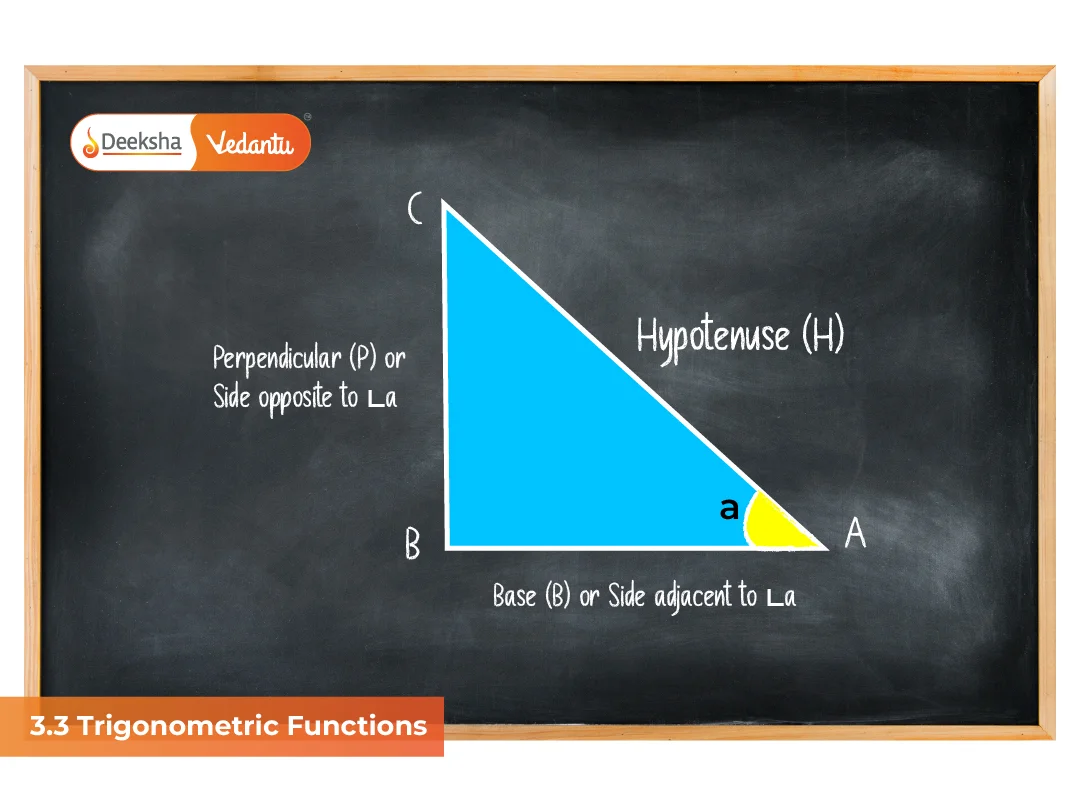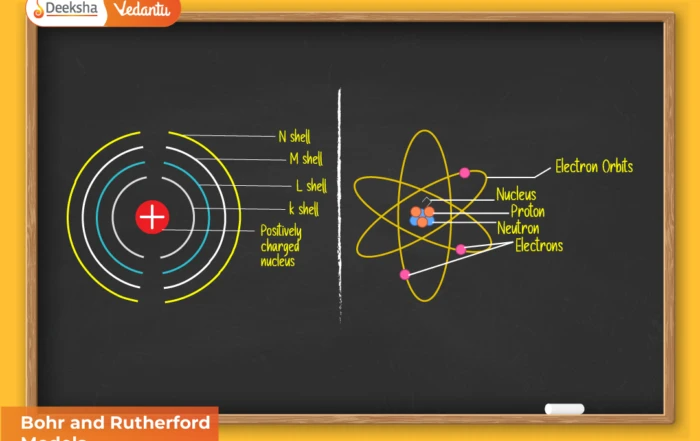
This chapter builds on the foundation of angles and introduces Trigonometric Functions, which are central to solving complex problems in calculus, physics, and engineering. It links directly to the Unit: Trigonometric Functions.
Competitive Exam Marks Distribution
| Exam | Approximate Weightage |
| JEE Main | 2–3 questions (~8–12 marks) |
| NEET (Physics) | 2–3 marks (angular functions, wave motion) |
| KCET/COMEDK | 1–2 direct questions |
What are Trigonometric Functions?
Trigonometric functions relate the angles of a right triangle to the ratios of its sides. These are essential tools in mathematics and physics, especially when dealing with rotational systems, waves, and periodic phenomena. The six primary trigonometric functions are:
- Sine (
)
- Cosine (
)
- Tangent (
)
- Cosecant (
or
)
- Secant (
)
- Cotangent (
)
These functions can also be defined using the unit circle and are periodic in nature.
Definitions in a Right Triangle:
Let the triangle have angle , then:
These ratios do not depend on the size of the triangle, making them universal for any triangle with a given angle.
Trigonometric Functions on the Unit Circle
In the unit circle (radius = 1):
- The coordinates of a point at angle
are
.
- Trigonometric functions become defined for all real values of
.
- The values of these functions repeat every
, which illustrates their periodic nature.
Example:
,
,
This circular interpretation extends the domain of trigonometric functions from acute angles to all real numbers.
Sign of Trigonometric Functions (ASTC Rule)
Understanding which trigonometric functions are positive in which quadrants is essential for evaluating expressions and solving equations. This is summarized using the mnemonic “All Students Take Calculus.”
| Quadrant | Positive Functions | Mnemonic |
| I | All functions | All |
| II | Students | |
| III | Take | |
| IV | Calculus |
Table – Signs of Trigonometric Functions in Each Quadrant
| I | II | III | IV | |
| + | + | – | – | |
| + | – | – | + | |
| + | – | + | – | |
| + | + | – | – | |
| + | – | – | + | |
| + | – | + | – |
Periodicity and Domain/Range
Trigonometric functions are periodic. Their graphs repeat over specific intervals known as periods. Here’s a summary:
| Function | Period | Domain | Range |
Table – Behaviour of Trigonometric Functions in Each Quadrant
| Function | I quadrant | II quadrant | III quadrant | IV quadrant |
| increases from 0 to 1 | decreases from 1 to 0 | decreases from 0 to –1 | increases from –1 to 0 | |
| decreases from 1 to 0 | decreases from 0 to –1 | increases from –1 to 0 | increases from 0 to 1 | |
| increases from 0 to | increases from | increases from 0 to | increases from | |
| decreases from | decreases from 0 to | decreases from | decreases from 0 to | |
| increases from 1 to | increases from | increases from | decreases from | |
| decreases from | increases from 1 to | increases from | decreases from |
Trigonometric Identities
These identities are essential in simplifying expressions, proving equations, and solving integrals.
Fundamental Identity:
Derived Identities:
These formulas form the backbone of most trigonometric transformations.
Example Problems
Q1. Find and
.
A:
Q2. Prove .
A: From definitions:
Practice Questions
- Find all values of
such that
.
- Evaluate
.
- Prove
using the identity.
- Sketch the graph of
over
.
FAQs
Q1. Why are trigonometric functions important in physics?
They describe oscillations, waves, rotational motion, and electric circuits.
Q2. How can I remember trigonometric identities easily?
Use the unit circle and mnemonic devices like “All Students Take Calculus.”
Q3. Which function is undefined at  ?
?
 and
and  are undefined.
are undefined.
Q4. How do I memorize signs in each quadrant?
Remember ASTC — All, Sine, Tangent, Cosine.
Q5. What is the difference between  and trigonometric coordinates?
and trigonometric coordinates?
In the unit circle, a point  represents
represents  .
.
Conclusion
Trigonometric functions are at the core of mathematical applications in science, engineering, and technology. From waves and circular motion in NEET to calculus and graph analysis in JEE and KCET/COMEDK, these functions are indispensable. A strong foundation in identities, properties, and graphical behavior will significantly boost your problem-solving skills in competitive exams. Practice identities, understand the unit circle, and solve diverse problems to











Get Social